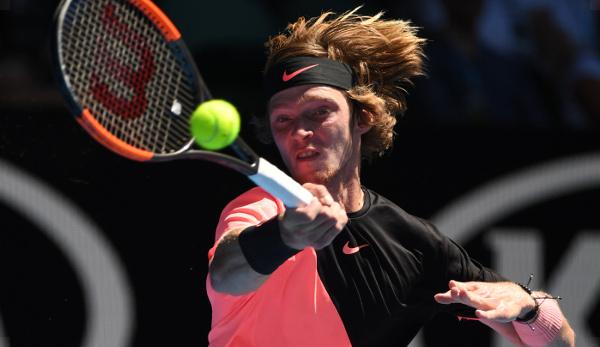Tennis
Tennis: Five immediate tips for more safety on the forehand
For many players this is the best shot, but for even more players it is also the source of many easy mistakes. Not only Andrey Rublev can sing a whole concert of many mistakes with the forehand.
The Russian plays an outstanding forehand, especially inside-out – from his backhand with the forehand diagonally over the course. But if you exaggerate and want more and more, even the best chocolate in the world tastes as good as ginger tea with lemon. This leads us directly to the first tip for more safety on your forehand.
The speed can quickly increase in a rally. You play one forehand, then the next and from forehand to forehand the tempo of your stroke becomes ever faster. What will be the logical consequence? You’ll overpower and make a mistake. Andrey Rublev is the world’s number one in this discipline.
But how can you touch the brake pedal in a fast ball change with your forehand? Work more with the wrist and your body’s center of gravity. Not only your club head has to get under the ball more intensively, but also your balance point has to be lower. Then you have the basic position to give the ball more spin from below and take the speed out of the rally.
There are many easy mistakes you make if you want to play along the line with your forehand, Longline. Quite apart from the fact that the net is higher in this direction, it is strategically not easy for you to play the forehand longline. You have to hit the ball very early. Then you have to stand up well to the ball and really stop when hitting – you mustn’t break the longline ball. The forehand along the line hardly forgives any carelessness.
Play once more crossover than you think you have to play. The angle for your forehand is easier, the net is lower and your shot has more space. The cross doesn’t immediately punish you for the slightest mistake. With every safe crossball you win more security and confidence to play longline at the right moment.
When the rally is running, you tend to play the ball flatter. You have to pay attention to so many little things that you sometimes lose the attention for the height of your strokes. Rafael Nadal is a genius at controlling the height of his forehand. Rafa only plays a forehand into the net when the shot slips and the ball starves to death. This is of course also due to his topspin, but he knows that it is in his power to avoid a mistake in the net. Look at this from him. Avoid a slight mains error with your forehand whenever possible. This may sound simple, but it requires a high degree of discipline and understanding of the game.
From the middle of the court it is not so easy to play a forehand in the forehand or backhand corner of the opponent. You are in the no-man’s-land of the course, you have to play the ball below the net height and your opponent is centered behind the baseline. In these situations it is safer to play the forehand directly on your opponent, i. e. in the middle. Many minor mistakes are the result of misjudging the angle in the respective game situation.
Remember that the target point for your forehand should always have as much space as possible to minimize the risk of a slight error. If the space for your target becomes smaller, the risk of your shot increases. This is similar to driving on a wide and narrow lane. On a very wide road you still have plenty of room for manoeuvre and can ride comfortably with one hand on the steering wheel. If the lane becomes narrower, you need more attention and the risk of getting off the lane increases.
You don’t have much time on the court. You’re stressed and annoyed anyway, so it doesn’t play into your bat if you complicate your forehand. You’re making an allegedly easy mistake? Check briefly what went wrong and make it better next time. This can be a simple construct of thoughts, which you can use as a schema for each error:
Did I kneel down?
Was my club area too open during the stroke?
was I lying on my back when I hit the ball?
You should always make the conversations you have with yourself as productive as possible. You can still insult yourself in the shower – after the match. But on the pitch you have time to correct your mistakes and learn from them quickly. Three out of four forehands, you were on your back? Perfect, then you know what to do better on the next forehand.
Use one or two of these tips for your next workout to find out more about breasts. For more safety with your forehand.













You must be logged in to post a comment Login